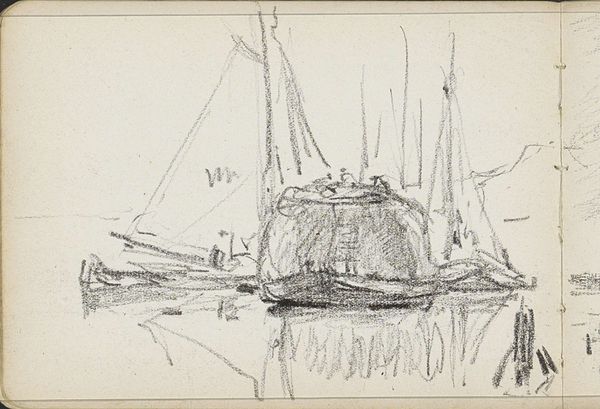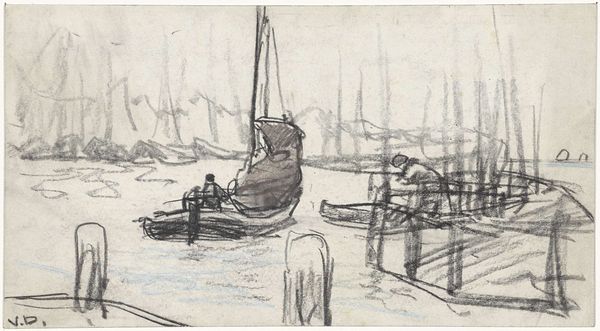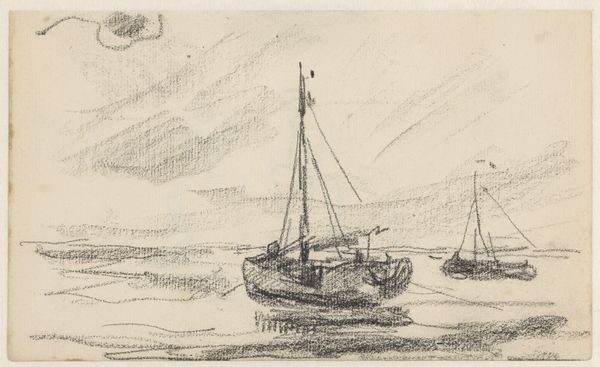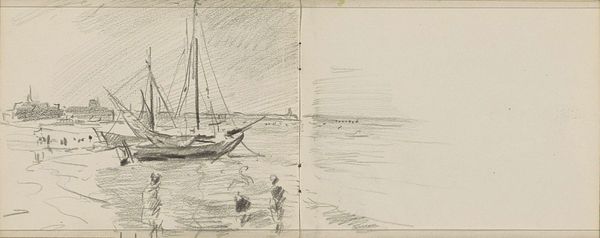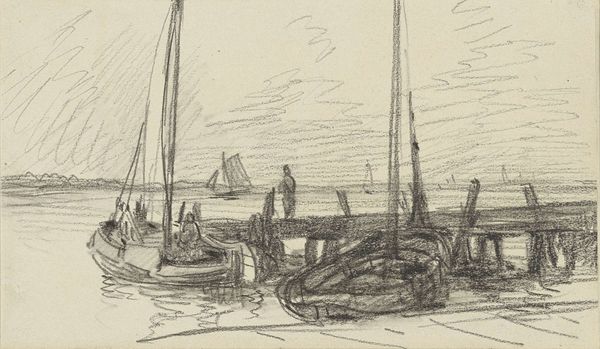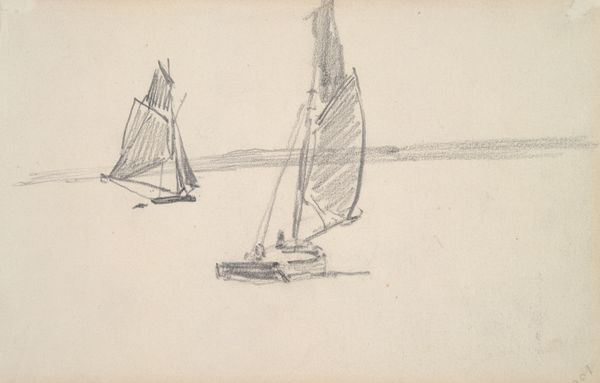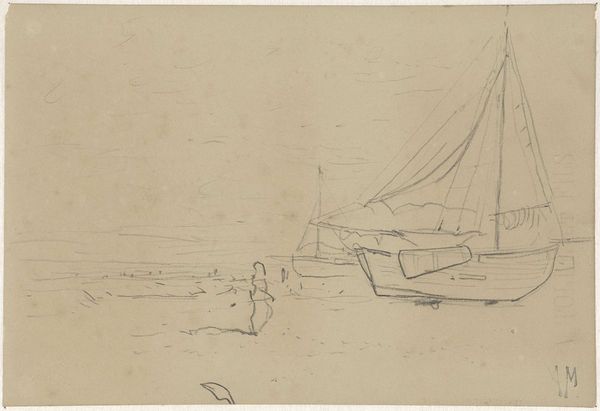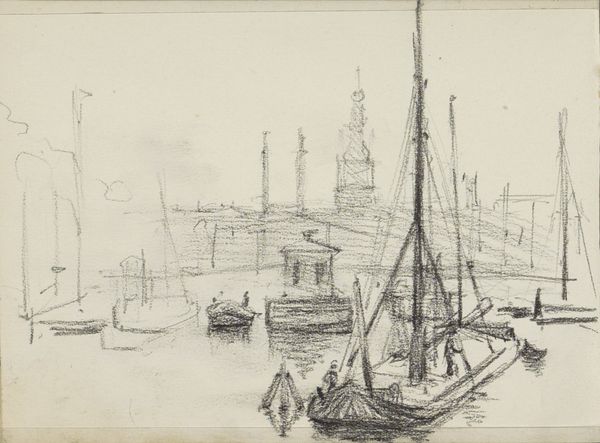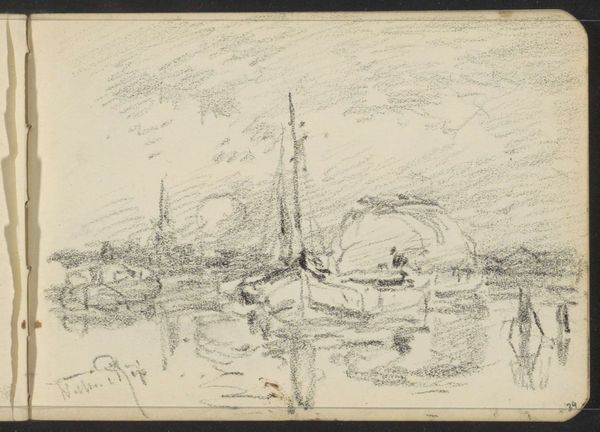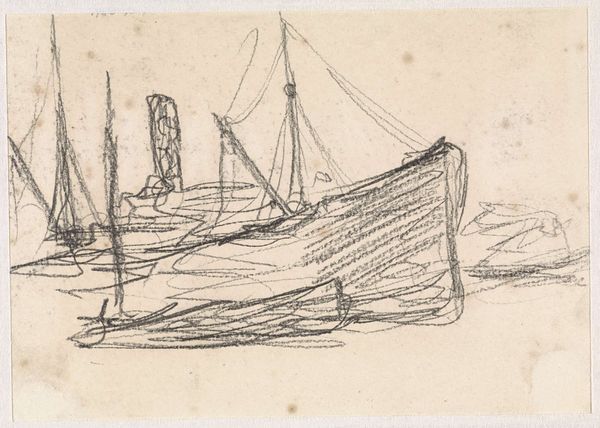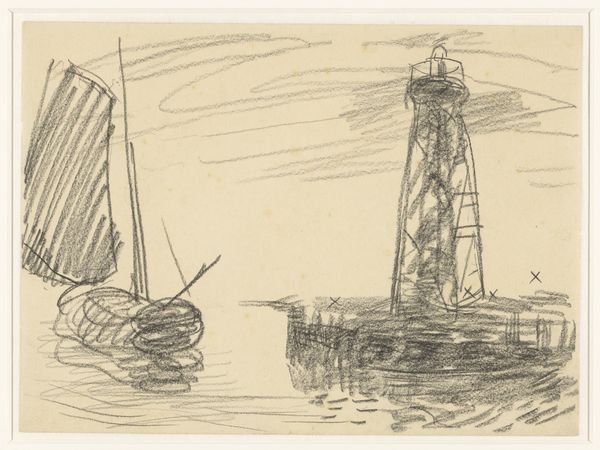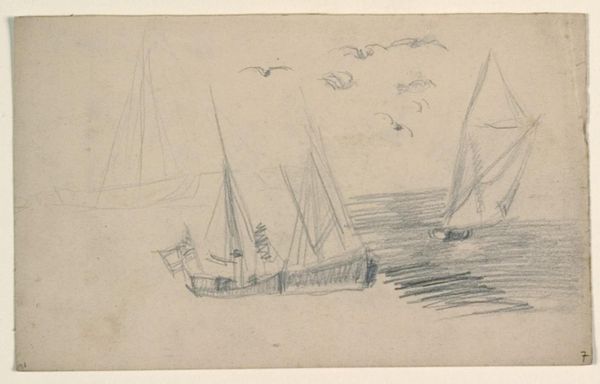
drawing, pencil
#
drawing
#
quirky sketch
#
pen sketch
#
landscape
#
personal sketchbook
#
idea generation sketch
#
sketchwork
#
ink drawing experimentation
#
pen-ink sketch
#
pencil
#
sketchbook drawing
#
storyboard and sketchbook work
#
realism
#
initial sketch
Copyright: Rijks Museum: Open Domain
Curator: This sketch, dating from the early 20th century, possibly between 1901 and 1927, is by Johan Antonie de Jonge. Titled "Zeilschepen in het water" – that’s "Sailing Ships in the Water" – it presents a minimalist composition rendered in pencil and ink. Editor: There’s a stark simplicity to it. The bare strokes somehow evoke the quiet lapping of water against hulls and the distant cries of gulls. It feels unfinished, a fleeting impression captured on paper. Curator: Indeed. Sketches like this were often part of an artist's process, documenting initial ideas before committing to a larger, more formal piece. You see this a lot within the Hague School tradition to which de Jonge belonged; he's capturing the light reflecting off the water with speed. Editor: Light is definitely a key element, even in its subtle way here. The lines depicting the boats are somewhat suggestive, like ideograms recalling seafaring. Perhaps we should read something into the masts piercing upwards, vertical aspirations against the broad horizontality of the water. Curator: Or perhaps they are just masts! We do need to be cautious in ascribing too much significance, as tempting as that may be. The social history behind it is just a working document that might later serve as studies for paintings. De Jonge might just be interested in capturing different vessel types for maritime painting. Editor: Fair point. The pier or whatever is jutting into the sea could also indicate a barrier and reflect anxieties around maritime identity and boundaries during a turbulent historical time, but yes, the symbolism might just be boats! Still, one is always trying to decode visual language in such a seemingly off-hand scene. Curator: True, such drawings document more than just visual data; it's a window into the artist’s visual thinking at a specific place and time, often linked to artistic communities. In this period, the marine setting served as an idealised one, as an escape of modern life from a city increasingly marked by the social divisions of wealth under urbanisation and industrialization. Editor: I agree entirely. This sketch, while seemingly simple, prompts so many pathways into thinking about artistic practices and cultural context. Curator: Yes, it encapsulates, in its bare essence, much broader histories of labour and trade within coastal communities that developed into centers for the modern aesthetic and visual production in that period.
Comments
No comments
Be the first to comment and join the conversation on the ultimate creative platform.
